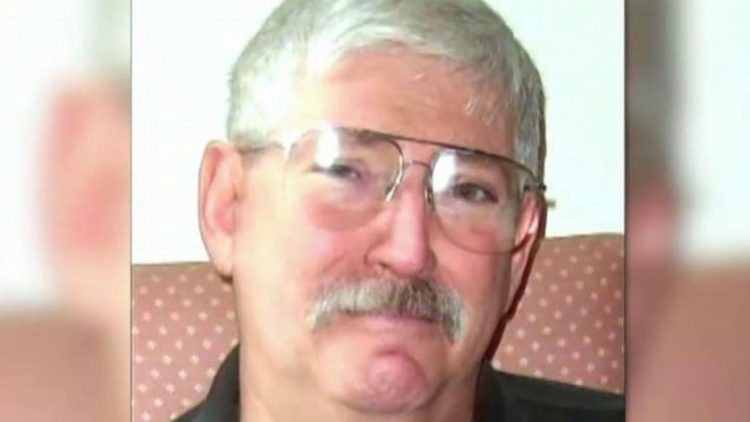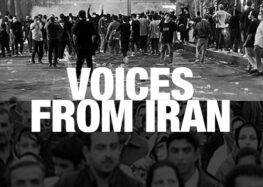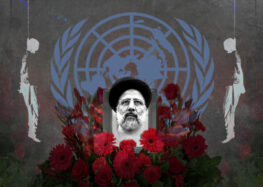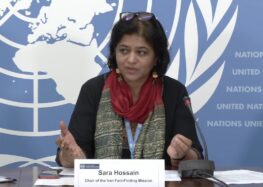Missing American’s Iran-Based Lawyer Reveals Previously Undisclosed Details in New Court Filing

Complaint: Authorities Should Investigate Last Known Person Who Saw Levinson Before His Disappearance, American Citizen Dawud Salahuddin
No Mention of Statement or Findings by the Islamic Revolutionary Guard Corps’ (IRGC) Intelligence Organization in Case Files
The Iran-based lawyer representing the family of missing U.S. citizen Robert Levinson, who was last seen at the Iranian resort island of Kish in 2007, has filed a complaint requesting investigation into two major issues related to Levinson’s disappearance.
Acknowledging an open case on Levinson for the first time, the Iranian government informed the UN Working Group on Enforced or Involuntary Disappearances at an unspecified date that “Robert Alan Levinson has an ongoing case in the Public Prosecution and Revolutionary Court of Tehran.”
The UN working group, which informed the Levinson family of the Iranian government’s statement, has not publicly specified whether Iran provided additional statements.
After the presiding assistant prosecutor in Iran ordered the case to be “halted” in October 2019, the Tehran-based lawyer representing the Levinson family, Mohammad Hossein Aghasi, filed a complaint on behalf of Robert Levinson requesting further investigation.
Aghasi’s complaint requests that the authorities investigate the last known person who saw Levinson before he disappeared, American citizen Dawud Salahuddin (alias), and explain why the case files include no indication that the authorities had questioned the Islamic Revolutionary Guard Corps’ (IRGC’s) intelligence organization, which is typically involved in cases involving American citizens.
“I filed a complaint on behalf of Mr. Levinson regarding his case at the Revolutionary Prosecutor’s Office in Tehran when the presiding assistant prosecutor ordered a halt in the investigation a month ago,” attorney Mohammad Hossein Aghasi told the Center for Human Rights in Iran (CHRI). “My complaint must be examined.”
Levinson had disappeared from Kish on March 9, 2007. In 2013, the Associated Press reported that Levinson, a former FBI agent, had traveled to Iran as a contractor for the CIA and not a private businessman as had been originally reported.
In April 2011, the Levinson family said it had been anonymously given video and pictures of Levinson looking frail and disheveled in an orange jumpsuit similar to those worn by prisoners at the U.S.-army-controlled Guantanamo Bay Detention Camp. The family made the photos public in 2013.
The Iranian government has repeatedly stated that it is not aware of Levinson’s location. But the Levinson family has refused to drop the case, arguing that the Iranian government knows more than it has stated publicly.
In November 2019, the State Department’s Rewards for Justice Program advertised up to $20 million for information about Levinson.
Iran-Based Lawyer: “The Case Should Be Open to Find Out What Happened”
Aghasi told CHRI that the Iranian authorities should investigate the last known person who saw Levinson before he disappeared and explain why the case files include no statement by the IRGC.
“I presented a person named Dawud Salahuddin, whose real name is David Theodore Belfield,” Aghasi told CHRI. “He committed murder in the U.S. and took asylum in Iran [in 1980]. He was at the hotel with Mr. Levinson when he went missing.”
“I met this person at the Sheraton Hotel in Tehran [date undisclosed],” said Aghasi, adding that “He made some contradictory statements.”
Aghasi added: “I conveyed this to the security agencies and the prosecutor’s office and told them that if they really want to find the truth, they should summon and question this person. Unfortunately, they ignored the matter for eight years and when the assistant prosecutor finally agreed to summon him, they said his address in Gohardasht [in the city of Karaj] had changed and they don’t have any other address for him. But a person who has taken asylum cannot move around in Iran without permission from legal authorities. We have made several inquiries… but haven’t received an answer.”
Salahuddin, an African-American convert to Islam, fled to Iran in 1980 after murdering the former press attaché of the Iranian Embassy in Washington, Ali Akbar Tabatabai, a critic of the Islamist government that had taken power in Iran after the 1979 revolution.
A fervent supporter of Iran’s revolutionary government, Salahuddin, an American fugitive, never returned to the U.S. to face prosecution.
Members of Levinson’s family traveled to Iran eight months after he disappeared and met with Aghasi.
“I told Levinson’s son, who is a lawyer in New York, that we should pursue this as a missing person’s case,” Aghasi told CHRI. “My reasoning was that when the Iranian government investigates someone and extracts information, they free him after a while or carry out an exchange or put pressure on the U.S. government in the media for violations of international protocols and other laws.”
“The fact that no information was released after the first eight or nine months [after Levinson’s disappearance] means that Mr. Levinson was not being held by the official government and it’s possible he was taken by other individuals,” he added.
Following is a partial transcript of Aghasi’s statements to CHRI:
When the family asked me to follow up on the case, I filed a missing person complaint at the prosecutor’s office in Kish. At first, they wouldn’t accept it. I took documents that showed he was at the Maryam Hotel in Kish, had breakfast and dinner, checked out and left the hotel in a taxi but never got to the airport and did not fly out of Iran.”
Finally, they accepted my complaint but they did not carry out a proper investigation. I told [Mahmoud Hashemi] Shahroudi, the judiciary chief at the time, that this was an important case but the authorities in Kish did not have sufficient resources. He agreed to transfer the case for investigation to Tehran. The case first went to the criminal division and then to the Revolutionary Prosecutor’s Office.
About a month ago [October 2019], the assistant prosecutor told me that they are closing the case and sent me a notice about it, but I made a complaint that there must an investigation. During [former President] Mahmoud Ahmadinejad’s government, there were meetings at the Intelligence Ministry and their agents said they wanted to close the case, but I said no. The case should be open to find out what happened.
A month ago, I did a thorough study of the case and on five occasions I sent letters to the counter-espionage division of the Intelligence Ministry to find out what had been done about it. Did any information show up about this person or not?
It is my belief that the Intelligence Ministry and the government have no information. If perhaps he was arrested and held by the guards’ [IRGC’s] intelligence organization—in other words by a government within the government—I don’t know. No inquiry has been made to the Guards’ intelligence organization about Mr. Levinson’s fate. Ultimately, it is not yet clear what happened to him and, despite our inquiries, the judicial and security agencies are not interested in looking into it.
Read this article in Persian.






